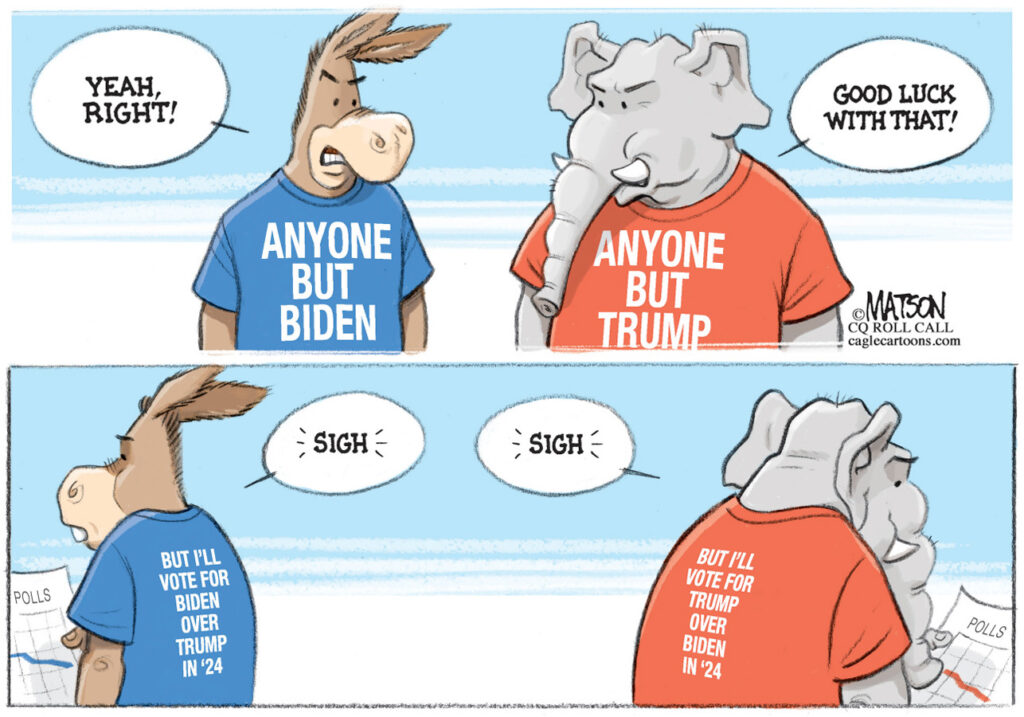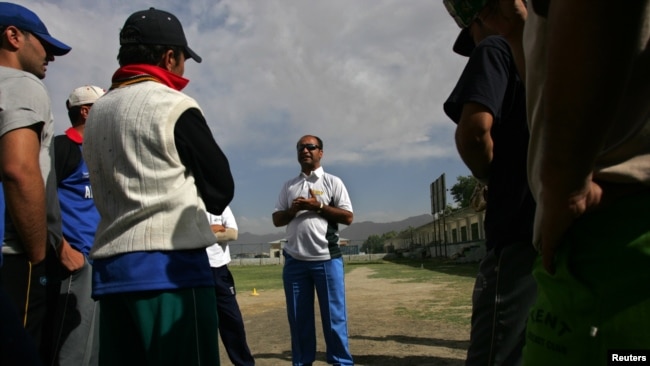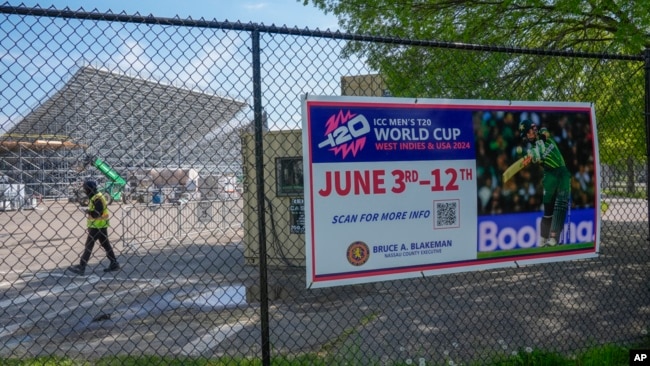Call for Alarm
Treachery, treason, tyranny, and traitors in a fading United States Democracy
 The unique post-World War II economic and military power of the United States prevented military and foreign policy errors from becoming overpowering disasters. Military adventures in Vietnam, Afghanistan, and Iraq upended America’s political system and wounded its psyche. Other than the 2001 attacks on American soil, physical destruction was foreign, appearing as images on television screens. Oil price rises, inflation, increasing debt to finance military costs, and social upheavals temporarily perturbed the US socioeconomic system. A powerful America overcame the impediments and continually extended its power until the Asian Tigers, a rejuvenated China, and progressive Latin leaders appeared on the global stage. America’s hegemony declined and the decline became confirmed by the Russian/Ukraine conflagration, Israel’s invasion of Gaza, and a subsequent attack on protesting students at the UCLA campus. No nation with unique power and in control of that power would have permitted these horrific happenings.
The unique post-World War II economic and military power of the United States prevented military and foreign policy errors from becoming overpowering disasters. Military adventures in Vietnam, Afghanistan, and Iraq upended America’s political system and wounded its psyche. Other than the 2001 attacks on American soil, physical destruction was foreign, appearing as images on television screens. Oil price rises, inflation, increasing debt to finance military costs, and social upheavals temporarily perturbed the US socioeconomic system. A powerful America overcame the impediments and continually extended its power until the Asian Tigers, a rejuvenated China, and progressive Latin leaders appeared on the global stage. America’s hegemony declined and the decline became confirmed by the Russian/Ukraine conflagration, Israel’s invasion of Gaza, and a subsequent attack on protesting students at the UCLA campus. No nation with unique power and in control of that power would have permitted these horrific happenings.
The US is sliding into a mediocre existence. Heard that before? Hear it again. Four words describe those who have brought the United States to a sorrowful state ─ treachery, treason, tyranny, and traitor ─ harsh words that will be met with smiles, sneers, and derisions. They are correct words and backed by a long list of treacherous, treasonous, tyrannical, and traitorous actors in the American public. The description of the “tyranny in America” is not a repetitious overkill; it is a necessary refrain that punctuates the alarm ─ America is led by pseudo patriots who have betrayed its ideals and Americans must regain its inspiring freedom, liberty-loving, and peaceful aspirations.
Domestic treachery, treason, tyranny, and traitors
Running for president of the USA are two traitors ─ Donald Trump and Joe Biden.
Donald Trump is accused of provoking and aiding the Jan 6, 2021 attack on the US capitol and pursuing an insurrection against the US government. Treason.
Donald Trump is accused of keeping US government top secrets in his home in locations where they could be revealed to others. He is guilty of violating US espionage laws. Treason.
Donald Trump solicits Evangelical vote and financial assistance by supporting Israel, a foreign nation, in its genocide of the Palestinian people. Treachery.
Joe Biden said, “Because even where we have some differences, my commitment to Israel, as you know, is ironclad. I think without Israel, there’s not a Jew in the world who’s secure. I think Israel is essential.” Besides the nonsensical statement that condemns Biden for not knowing that Israel is the only country in the world where Jews have continually suffered from fatal attacks, claim insecurity that seeks security, and exhibit excessive prejudice toward one another — Ashkenazi against Mizrahi, both against Yemeni and Falasha, and secular against ultra-orthodox — Biden admits he has failed to protect the most well-off Americans ─ Jewish citizens (from what??). Treachery.
By having said, “My commitment to Israel, as you know, is ironclad,” Joe Biden betrayed US interests, which should have a flexible foreign policy. He has allied the US people with genocide. Traitor.
Hunter Biden had financial dealings with adversaries of the US government. Joe Biden should have known his son’s arrangements and prevented accusations of influence peddling. Joe Biden is guilty of violating his oath of office. Treachery.
Biden, similar to Trump, brought classified documents to his home and left them scattered in places open to revelation. Despite the Justice Department not pressing charges, Biden is guilty of violating US espionage laws. Treason.
The US Justice Department (DOJ) indicted several Russians and Chinese who infiltrated America, gathered information, and lobbied for a foreign nation. The US Justice Department has not indicted one of tens of thousands of Israelis (could be one of hundreds of thousands), who have performed similar duties for Israel. Lobbying is only a small part of the damage to Americans done by these miscreant infiltrators, sent by Israel to foreign shores to do their mischief. From the almost one million Israelis living in the United States, hundreds of thousands may have become citizens, voted, and changed a highly contested election. In a coming election in Westchester, New York, Westchester Unites urged Jewish voters in the district (not non-Jewish voters??) to request ballots so they could vote before the June 25 Democratic primary battle between New York Rep. Jamaal Bowman, who criticizes Israel, and challenger, Westchester County Executive George Latimer, an avid supporter of apartheid Israel’s genocide. Campaign organizers say they will spend up to $1 million to boost voter turnout.
I’m not privy to the manipulations of the American public performed by the mass of Israeli infiltrators. One example is the declarations by Rabbi Ammiel Hirsch, the senior rabbi of Manhattan’s Stephen Wise Free Synagogue. His contrived Amplify Israel Initiative “aims to breathe new life into the principles we’ve been committed to for decades, with an array of programs aimed at bolstering support for Israel and aligning Zionism with liberal ideology.” In clearer words, “influence every man, woman, and child that nationalist, militarist, oppressive, and apartheid Israel is a benevolent country.”
Who is Rabbi Hirsch? Ammiel Hirsch went to high school in Israel, served as a tank commander in the IDF, and was formerly the director of the Association of Reform Zionists of America, the Israeli arm of the North American Reform movement. In a response to a letter, in which 93 rabbinical and cantorial students harshly criticized Israeli actions in the hostilities between Israel and Hamas, Rabbi Hirsch wrote:
For the record, the Reform movement is a Zionist movement. Every single branch of our movement — the synagogue arm (Union for Reform Judaism), the rabbinic union (Central Conference of American Rabbis), and our seminary (HUC-JIR) — every organization separately, and all together, are Zionist and committed ideologically and theologically to Israel.
Why did Rabbi Ammiel Hirsch, after receiving training in Israel, come to the United States to guide the Reform movement, which, in previous decades, had been against Zionism, and define it in Israel’s image? By not investigating the actions of multitudes of Israelis residing, the US Justice Department betrays the US people.
In an espionage scandal involving Lawrence Franklin, a former United States Department of Defense employee, who passed classified documents to AIPAC officials, which disclosed secret United States policy towards Iran, Franklin pleaded guilty and, in January 2006, was sentenced to nearly 13 years of prison. He served ten months of house arrest. The DOJ dropped espionage charges against the AIPAC officials — Steve Rosen and Keith Weissman. Reason (which was treason) — the Department claimed court rulings had made the case unwinnable and the trial would disclose classified information (which can apply to almost every trial for treason). Despite the previous espionage charges and knowledge that un-American AIPAC is a lobby for apartheid Israel, the DOJ has not indicted AIPAC for being an unregistered lobby and has permitted its cadre of Israel firsters to wander the halls of Congress and shake palms with dollar bills. Traitors.
US representatives know that AIPAC lobbies for an apartheid Israel that is committing genocide and drags US citizens into accusations of aiding the genocide. Politicians accept contributions from individuals allied with AIPAC and vote in accordance with AIPAC’s preferences. The power of the contributions and fear that disregarding AIPAC poses a danger to remaining in office was highlighted in 1984. For voting to permit Boeing to sell AWACS aircraft to Saudi Arabia and for suggesting there were Palestinians and they had “rights,” AIPAC marked as undesirable the popular Senate Foreign Relations Committee Chairman, Charles Percy, who had always favored Israel. Paul Simon wrote in his autobiography that Bob Asher, an AIPAC board member, called him to run for Senator from Illinois. Simon unseated the admired and respected Charles Percy who was only 98% pure in his support for Israel. Treachery.
The US government and local governments favor laws, such as the Antisemitism Awareness Act, which can suppress free speech and free actions that contend Israel’s genocidal policies, and H.R. 3016, Anti-Boycott Act, which “bars U.S. citizens from participating in boycotts of U.S. allies if those boycotts are promoted or imposed by foreign countries.” Federal and local governments tyrannize the US people. Tyranny.
The Los Angeles (LA) Police Department stood by for hours before halting attacks on peaceful UCLA students and then arrested dozens of student protesters and not any of the vigilantes who represented a foreign power and attacked the students. The LA Police Department supported a group representing a foreign government and failed to protect American citizens. Treason.
The House of Representatives has had numerous one-sided hearings on campus anti-Semitism that feature callous remarks against Jews from relatively few of the protestors. In none of the hearings has a Committee invited the student protestors to testify; maybe, because they might say, “These students do not represent the protestors. They are angry and frustrated individuals who see Israel identify itself as a Jewish state and note that a great number of American Jews approve of Israel and its genocide of the Palestinian people. They realistically equate Jews with the genocide.” The truth of these hearings is they are more concerned with fictional Jewish feelings than factual Palestinian lives. Let’s face it, these hearings are organized by Israel’s advocates who seek to prevent the US public from gaining awareness of the genocide and shift the protest arguments to a spurious charge of anti-Semitism in America. Elected officials adhere to a foreign nation’s request to stifle American citizens from exercising their right to protest and move dialogue from the horrific victimization of Gazans to an artificially created Jewish victimhood. College presidents committed a huge error by not responding to the committees’ fabricated charges of campus anti-Semitism with a simple statement, “There is no campus anti-Semitism and you are attempting to divert the impact of these demonstrations that criticize Israel policies into a false charge that indirectly enhances Israel’s image.” By representing a foreign power and censoring American students from their right to protest, these elected officials are guilty. Treason.
Foreign policies exhibit the same treachery, treason, tyranny, and traitors.
North Vietnam
President Lyndon Johnson’s reciting a dubious attack by North Vietnamese patrol boats on the USS Maddox in international waters cajoled Americans into accepting an increased US military involvement in the Vietnamese civil war. Global strategists also mentioned the Domino Theory, where if one country falls to communism, then adjacent nations also become communist. A non-functioning Southeast Asia Collective Defense Treaty (SEATO) tied these fabrications into a call for action. Result was 58,148 uniformed Americans killed, 200,000 wounded, and 75,000 severely wounded. Ho Chi Minh’s followers won the war and none of the neighboring SEATO nations became communist. Secretary of Defense Robert McNamara, the leading prophet of the Domino Theory, confessed, “I think we were wrong. I do not believe that Vietnam was that important to the communists. I don’t believe that its loss would have led – it didn’t lead – to Communist control of Asia.” Treachery.
Six-day war
During the 1967 war between Israel and its neighbors, Israeli torpedo boats and airplanes attacked the intelligence ship USS Liberty in international waters, killed 34, and wounded 171 American service personnel. President Johnson refused to respond to this assault, an insult to all Americans. Treason.
Yom Kippur war
In the 1973 Yom Kippur War, President Nixon’s administration supplied arms to Israel and reversed the course of the war. Arab nations responded with an oil embargo that caused huge inflation in the United States, punished the American consumer, and harmed the American economy. Treachery.
Afghanistan-1980s
President Ronald Reagan’s CIA covertly assisted Pakistan intelligence in providing financial and military assistance to Osama bin Laden during the Soviet incursion into Afghanistan. In effect, the US played an essential role in creating the al-Qaeda network. Treason.
International Terrorism and 911
After Ronald Reagan helped create and popularize Osama bin Laden, later presidents did not heed Osama bin Laden’s warnings. The arch-terrorist clarified his position in the infamous Osama bin Laden’s “Letter to the American people,” which has been conveniently sidetracked to ensure Americans do not get infected with terrorism germs. It should be titled, “How the United States made me a terrorist.” It is difficult to agree with bin Laden but his statements are not easily contended.
You have starved the Muslims of Iraq, where children die every day. It is a wonder that more than 1.5 million Iraqi children have died as a result of your sanctions, and you did not show concern.
Thus the American people have chosen, consented to, and affirmed their support for the Israeli oppression of the Palestinians, the occupation and usurpation of their land, and its continuous killing, torture, punishment and expulsion of the Palestinians. The American people have the ability and choice to refuse the policies of their Government and even to change it if they want.
You have destroyed nature with your industrial waste and gases more than any other nation in history. Despite this, you refuse to sign the Kyoto agreement so that you can secure the profit of your greedy companies and industries.
William J. Clinton was president during the period that Bin Laden raged his fury at the United States. If Bill Clinton had considered some of bin Laden’s grievances his considerations might have prevented the later 9/11 attack on American soil. Treason.
George W. Bush and American security officials permitted 19 co-conspirators to enter the country and take preparatory flying lessons in full view of authorities. His DOJ did not pursue information that connected the Saudi royal family with the bombers. Treason.
Afghanistan-2001
Without exhausting all means to have Osama bin Laden extradited from Afghanistan and knowing that the Taliban was not directly involved in the 9/11 attacks, President George W. Bush invaded Afghanistan in a military adventure that had no defined purpose and accomplished nothing. In a war that lasted 20 years, the United States had 2,459 military deaths and 20,769 American service members wounded in action. Twenty years of a useless war that only brought the Taliban back to power. Treachery.
Iraq
George W. Bush’s uncalled-for war against Saddam Hussein’s Iraq (Operation Iraqi Freedom) is the best example of sacrificing U.S. lives to advance Israel’s interests. The cited reason ─ destroying Hussein’s weapons of destruction ─ whose evidence of developments the U.S. based on spurious intelligence and was a farce that no sensible person could believe. This “made for consumption” and fabricated story detracted from the real reason for the U.S. invasion of Iraq — to prevent Iraq from becoming the central power in the Middle East and able to threaten Israel. Neocons succeeded in pressuring President George W. Bush to sacrifice American lives and, by military action, remove Saddam Hussein from power. Discarding the nonsensical assertion that Saddam Hussein, who had no nuclear material, no technology to develop a nuclear weapon, and no ICBMs to deliver a bomb, threatened the United States, and needed to be immediately stopped from turning bubble gum into a mighty weapon solicits a more acceptable reason for the U.S. attack on Iraq. The U.S. Department of Defense casualty website has the US military suffering 4,418 deaths and 31,994 wounded in action during the Iraq War. No coincidence that Iraq was a long-time adversary of Israel and it was in Israel’s interests to have Iraq become militarily impotent. Treason.
Libya
NATO declared it intervened in the 2011 Libyan Civil War “to protect civilians and civilian populated areas under threat of attack.” President Barack Obama remarked, “Gaddafi declared that he would show ‘no mercy’ to his own people. He compared them to rats, and threatened to go door to door to inflict punishment.”
Reuters report demonstrated significant differences between Gaddafi’s remarks and President Obama’s rendition: Gaddafi Tells Rebel City, Benghazi, ‘We Will Show No Mercy,’ March 17, 2011.
Muammar Gaddafi told Libyan rebels on Thursday his armed forces were coming to their capital Benghazi tonight and would not show any mercy to fighters who resisted them. In a radio address, he told Benghazi residents that soldiers would search every house in the city and people who had no arms had no reason to fear. He also told his troops not to pursue any rebels who drop their guns and flee when government forces reach the city.
Logic tells us that few Benghazi residents could even have guns to hide, and Gadhafi’s forces were too limited to carry out any large-scale purge.
The U.S. vacillated, and Secretary of State, Hillary Clinton, convinced President Obama to join NATO in removing Gaddafi. NATO eliminated Gaddafi, Islamic extremists gained partial power, discarded armaments were shipped to al-Qaeda “look-alikes” throughout North Africa and soon the Jama’at Nusrat al Islam wal Muslimin (JNIM) coalition, Boko Haram, and Islamic State in West Africa (ISWA) were creating havoc throughout North Africa. The US gained nothing in removing Gaddafi and created more Islamic extremist organizations with which to contend. Treachery.
UN Vetoes
As of December 18, 2023, the U.S. vetoed resolutions critical of Israel 45 times. Each time, the Secretary of State offered the excuse that the resolution would not advance the cause of peace, and each time vetoing the resolution did not advance the cause for peace. Why do Americans give deference to Israelis when Israel insults American leaders, uses Americans to die in wars that advance Israel’s interests, causes havoc that brings injury to U.S. relations with other nations, and sucks money ($3.1 billion annually) from U.S. taxpayers to support its apartheid and oppressive policies?
Some mentioned reasons, which have changed during the decades, are:
- Israel was aligned with the US during the Cold War.
- The US needs a Western-style pistol-packing mama in the Middle East.
- Israel has an excellent intelligence-gathering network that shares information.
- The two countries collaborate on the joint-development of sophisticated technologies.
Pundits confuse support for Israel with support for this Israel. The United States, for military and geopolitical reasons, can support Israel, as it does Columbia, but there is no reason to support and assist this Israel in the destruction of the Palestinians. The Washington establishment and foreign policymakers have incorrectly calculated the tradeoffs between supporting this Israel in its denial of Palestinian rights and in satisfying the Palestinian cause.
- Israel is no longer dependent on the United States and seeks its own alliances.
- Israel will not scratch a finger to help the US in any conflict; just the opposite, it convinces the US to fight for Israel.
- Israel intelligence provides the CIA with intelligence concerning nations that are adversarial to the US due to its close ties with Israel. No close ties, none of these adversaries, and no need for intelligence.
- Israel has used US and Russian engineers for its technical achievements. No Israel, and the Russian and American engineers will go to work in Silicon Valley.
Just for money and votes, U.S. politicians sell out their commitment to the American people, follow the dictates of a foreign nation, and make Americans party to the destruction of innocent people. TREASON!!
Conclusion
Americans have, at times echoed grievances against their government’s policies and demonstrated their despair, well, some Americans, a small minority of the US population. The rest of the population has been naïve, complacent, and manipulated. Due to America’s intrinsic wealth — natural resources, abundant farmland, temperate climate, rivers, valleys, streams, hard-working population, ocean barriers to foreign incursions — the treachery, treason, tyranny, and traitors temporarily slowed but did not stop the roaring engine. The roaring engine is beginning to sputter.
America’s posture as the leading defender of democracy and human rights is hypocritical; its economic system is challenged; its united states are disunited; its pluralistic political system is an epic fantasy; its legislative bodies are divided; and its courts are agenda-seeking rather than law-abiding. Democracy recedes and polarization of citizens widens. Americans are increasingly divided in their aspirations and express increasing fears of one another. An almost self-sufficient economic system proceeds with debt financing imports, trade imbalances, and growth, an unruly situation that can continue until debt hits a financial wall and repaying the debt becomes intolerable.
Hopefully, more Americans will take cognizance of the failed leadership, meet the challenges they pose, gather the resources, form the organizations, shout much louder, push much stronger, and succeed in disposing of the treachery, treason, tyranny, and traitors that have made the Statue of Liberty weep.
The words of Patrick Henry, “These are the times that try people’s souls,” are heard again in the cities and villages of a disunited United States of America.
Dan Lieberman publishes commentaries on foreign policy, economics, and politics at substack.com. He is author of the non-fiction books A Third Party Can Succeed in America, Not until They Were Gone, Think Tanks of DC, The Artistry of a Dog, and a novel: The Victory (under a pen name, David L. McWellan). Read other articles by Dan.







